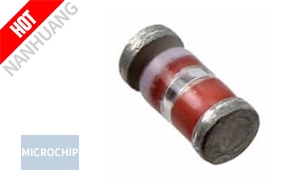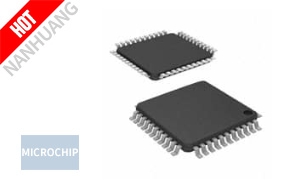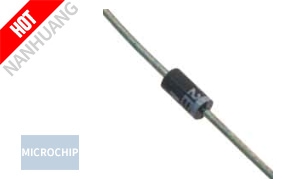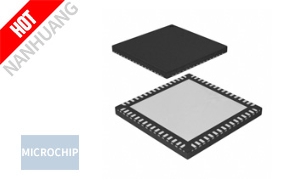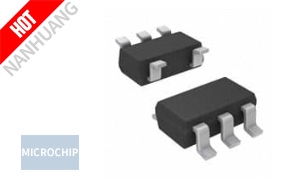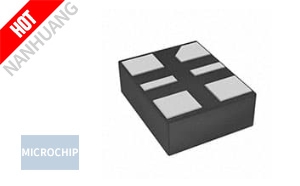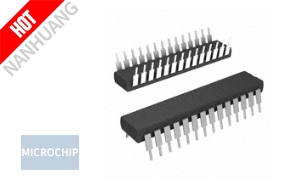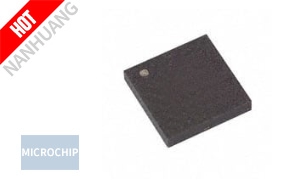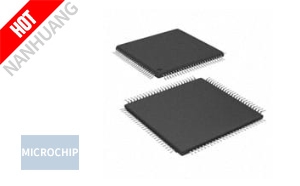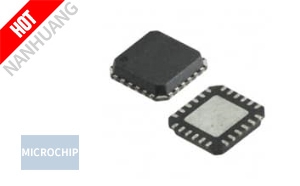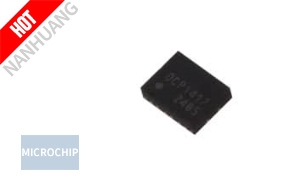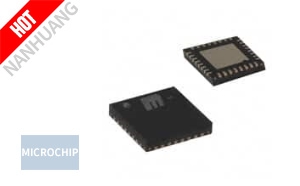
Wireless connectivity has become a mandatory feature for many products but often increases the cost and complexity of system design since it generally must be added as part of the larger application. Microchip Technology Inc. (Nasdaq: MCHP) is introducing its first Arm Cortex®-M4F-based PIC microcontroller (MCU) family today that solves this wireless connectivity design challenge by integrating Bluetooth Low Energy functionality directly into one of a system’s most basic components, supported by one of the industry’s most comprehensive developer ecosystems.
“Our PIC32CX-BZ2 MCU family removes barriers that have made it difficult to bring wireless applications to market, from availability problems and complexity challenges to regulatory certification hurdles and long-term support concerns,” said Steve Caldwell, vice president of Microchip’s wireless solutions business unit. “Our family tightly integrates wireless connectivity with an MCU that is built on our decades of specialized experience and backed by a vertical manufacturing approach that encompasses ICs, Microchip’s highly integrated software stacks, in-house module manufacturing and a customer-driven obsolescence practice.”
Microchip’s PIC32CX-BZ2 family includes System-on-Chip (SoC) devices as well as global regulatory-certified, RF-ready modules. In addition to Bluetooth Low Energy functionality, the family includes Zigbee® stacks and Over the Air (OTA) update capabilities. Hardware features include a 12-bit Analog-to-Digital Converter (ADC), multiple timer/counters for control (TCC) channels, an on-board encryption engine, and a broad set of interfaces to touch, CAN, sensor, display and other peripherals. The family’s 1 MB of Flash memory supports large application codes, multiprotocol wireless stacks, and OTA updates. AEC-Q100 Grade 1 (125 °C) qualified packages further simplify wireless connectivity integration where highly robust solutions are required.
The PIC32CX-BZ2 MCU family simplifies development through Microchip’s MPLAB® Harmony 32-bit embedded software development framework. MPLAB Code Configurator integration enables developers to quickly begin prototyping with the PIC32CX-BZ2 family using drag-and-drop auto code generation. Numerous application code examples are hosted on GitHub and linked through MPLAB Code Configurator and MPLAB Discover. RF design with PIC32CX-BZ2 SoCs is simplified with the ecosystem’s chip-down reference design packages and wireless design check services. Customers with little to no RF expertise can benefit from Microchip’s WBZ451 modules that are pre-certified to multiple regulations around the world and feature an optimized on-board RF design.
Development Tools
In addition to the MPLAB Code Configurator, the MPLAB Harmony v3 framework includes numerous other tools and an ecosystem of debuggers, programmers, virtual sniffer, and compilers. Other support includes GitHub demo applications and documentation, wireless design check services, and building blocks that walk developers through all the steps involved in the application development process. The PIC32CX-BZ2 family is supported by the PIC32CX-BZ2 and WBZ451 Curiosity Development Board (Part number: EV96B94A).
Availability
The PIC32CX-ZB2 family is in-stock and available now. PIC32CX1012BZ25048-I and PIC32CX1012BZ25048-E SoCs ship in 7 x 7 mm 48 Quad-Flat No-leads (QFN) packages. The WBZ451PE-I and the WBZ451UE-I modules come with an on-board Printed Circuit Board (PCB) antenna and a U.FL connector for external antenna respectively.
All registered trademarks and other trademarks belong to their respective owners. For more details, please visit Microchip official site.
- DIODE ZENER TEMP COMPENSATED
- IC MCU 8BIT 28KB FLASH 44TQFP
- DIODE ZENER 10V 1W DO204AL
- IC MCU 8BIT 16KB FLASH 64QFN
- IC SUPERVISOR 1 CHANNEL SOT23-5
- MEMS OSC XO 156.2500MHZ LVPECL
- IC MCU 8BIT 768B OTP 28SPDIP
- IC SRL CONFIG EEPROM 256K 8LAP
- IC MCU 32BIT 512KB FLASH 100TQFP
- IC TRANSCEIVER 25VFBGA
- MEMS OSC PROG XO HCSL 2.25-3.6V
- IC CLK BUFFER 2:6 5.5GHZ 32MLF
- Microchip announces a comprehensive ecosystem around AUTOSAR-ready dsPIC33C Digital Signal Controlle
- Microchip announces the AVR-IoT Cellular Mini Development Board based on the AVR128DB48 8-bit microc
- Microchip Technology announces the expansion of its serial-attached memory controller portfolio
- Microchip announces expanded its portfolio of MPU System-on-Modules (SOMs) with the SAM9X60D1G-SOM A
- Microchip Technology announces the PIC32CM JH microcontroller (MCU)
- Microchip Unveils Industry’s First Terabit-Scale Secure Ethernet PHY Family
- Microchip Technology is introducing its first Arm Cortex®-M4F-based PIC microcontroller (MCU) famil
- Microchip announces the LAN8840 and LAN8841 Gigabit Ethernet transceiver devices
- Microchip announces the introduction of its first commercial-off-the-shelf (COTS) rad-tolerant power
- Microchip Technology announces a new comprehensive hybrid power drive module
- Microchip announces expanded its secure authentication device portfolio with six new products in its
- Microchip Technology announces its MPLAB® SiC Power Simulator


